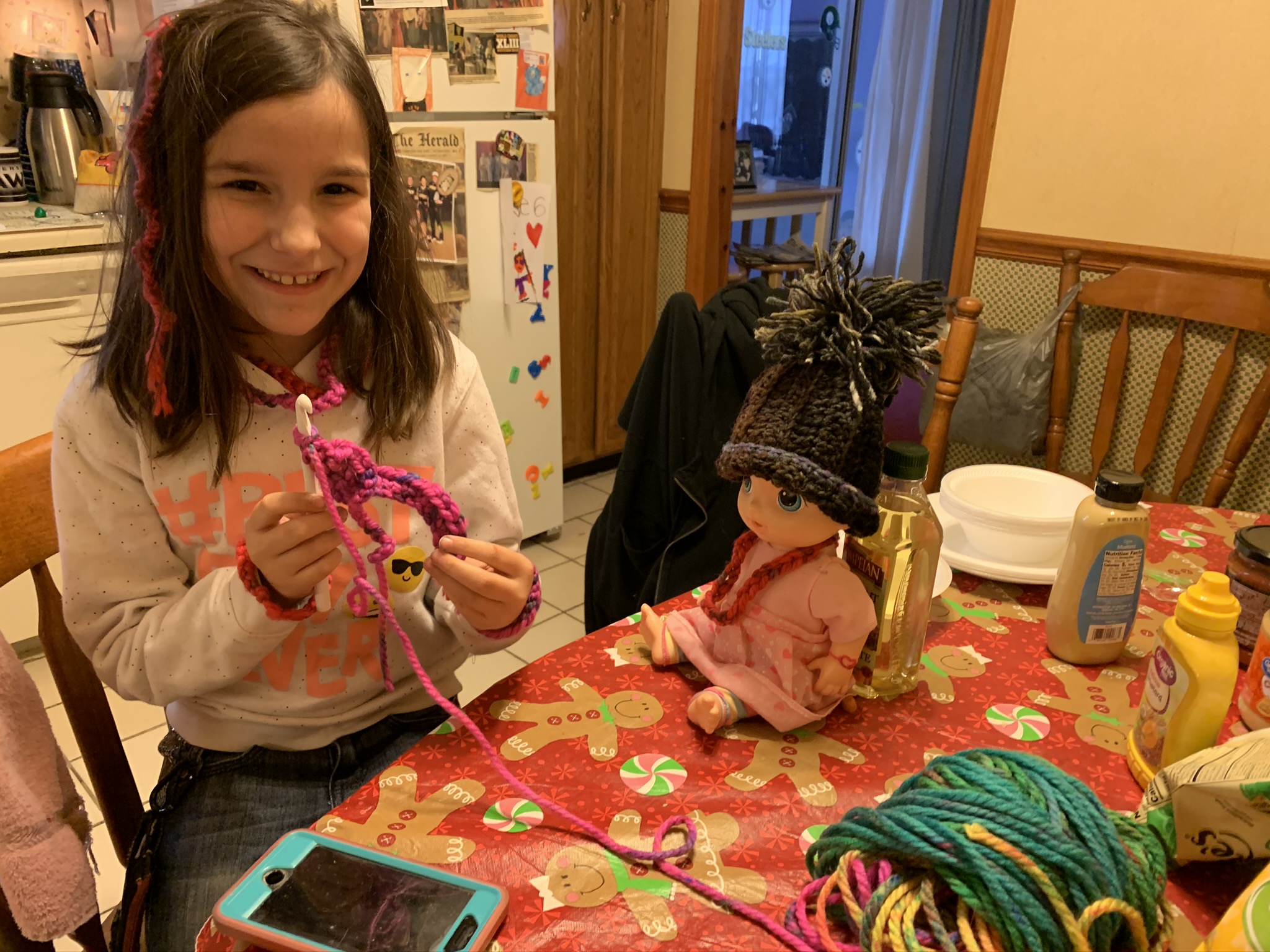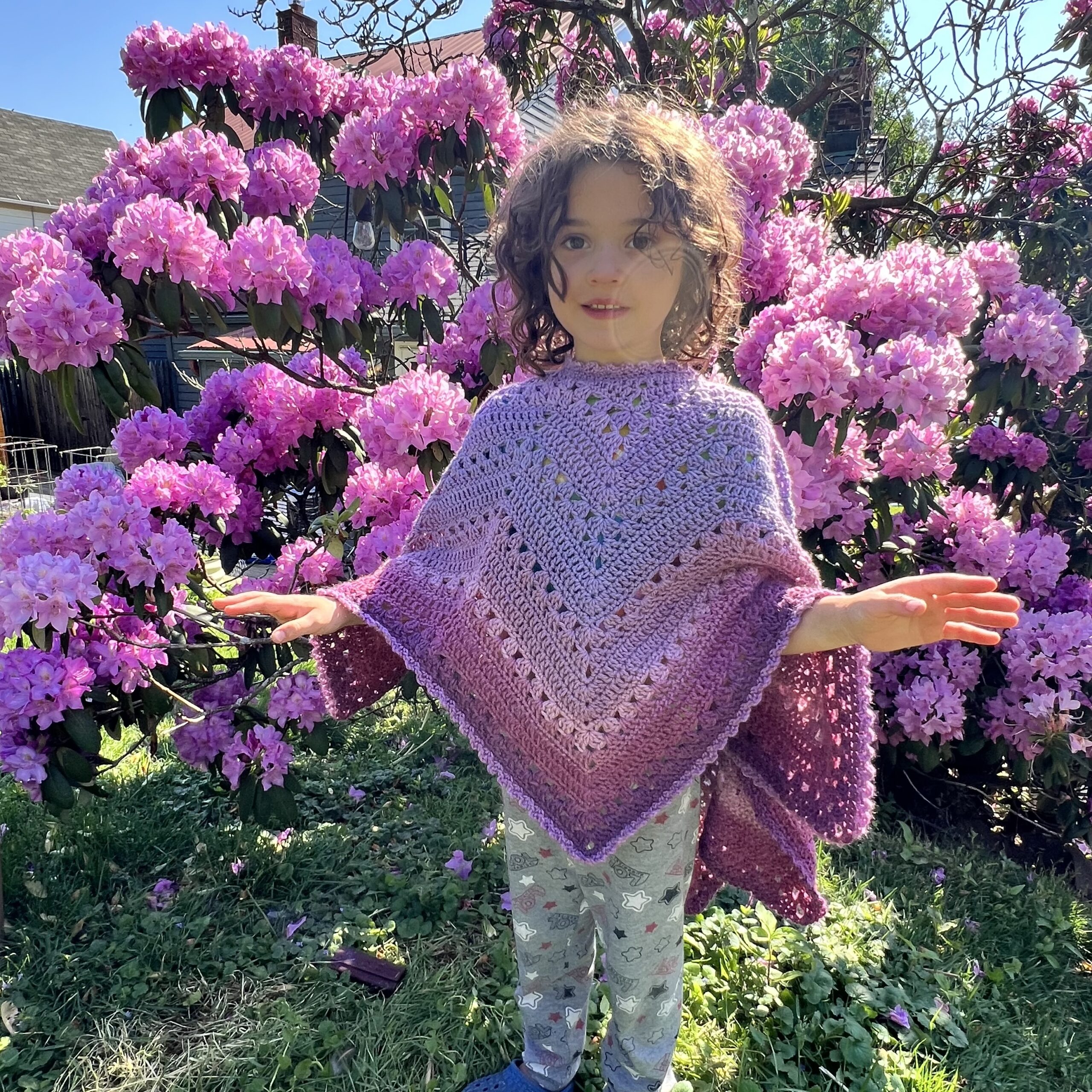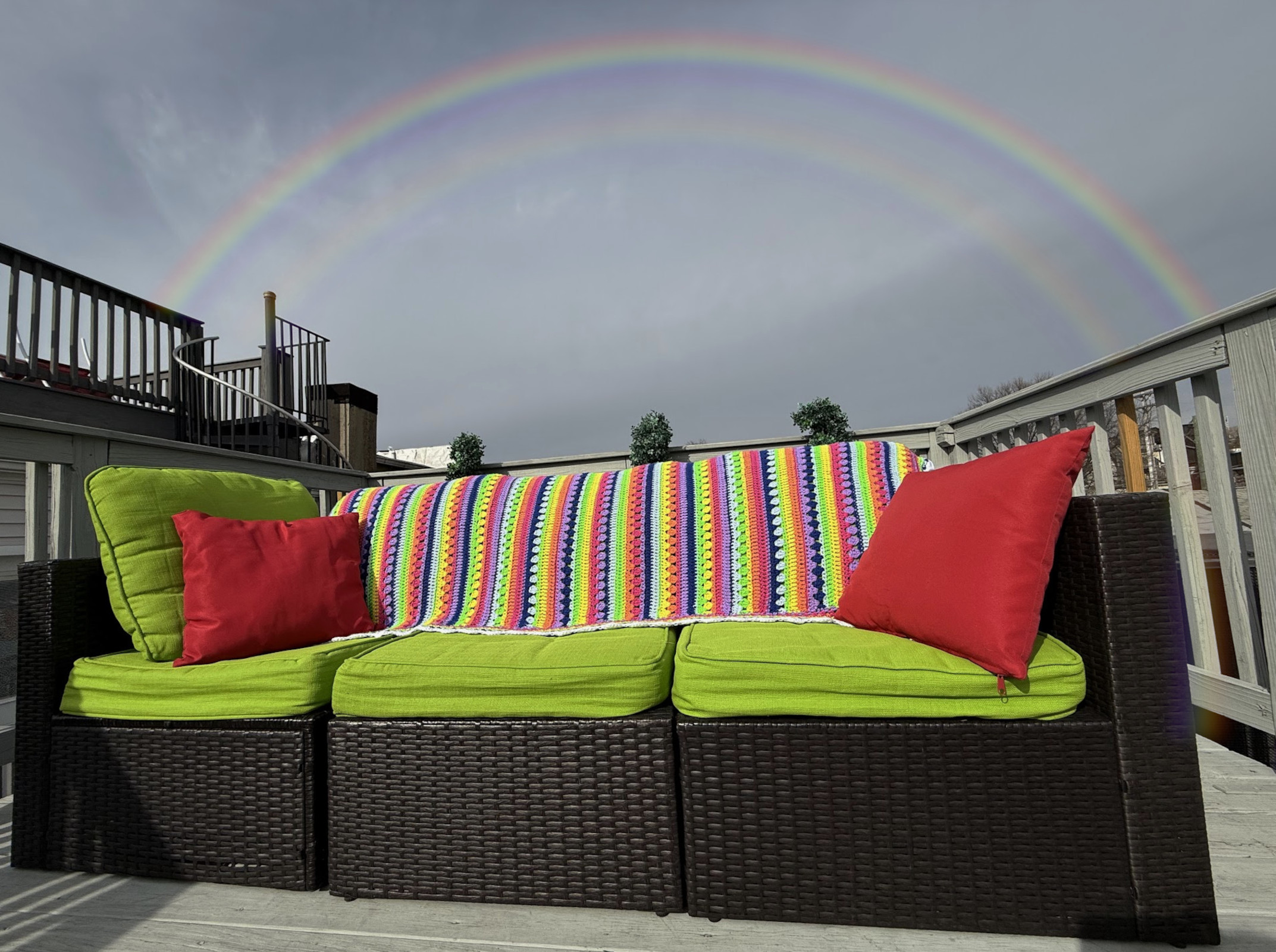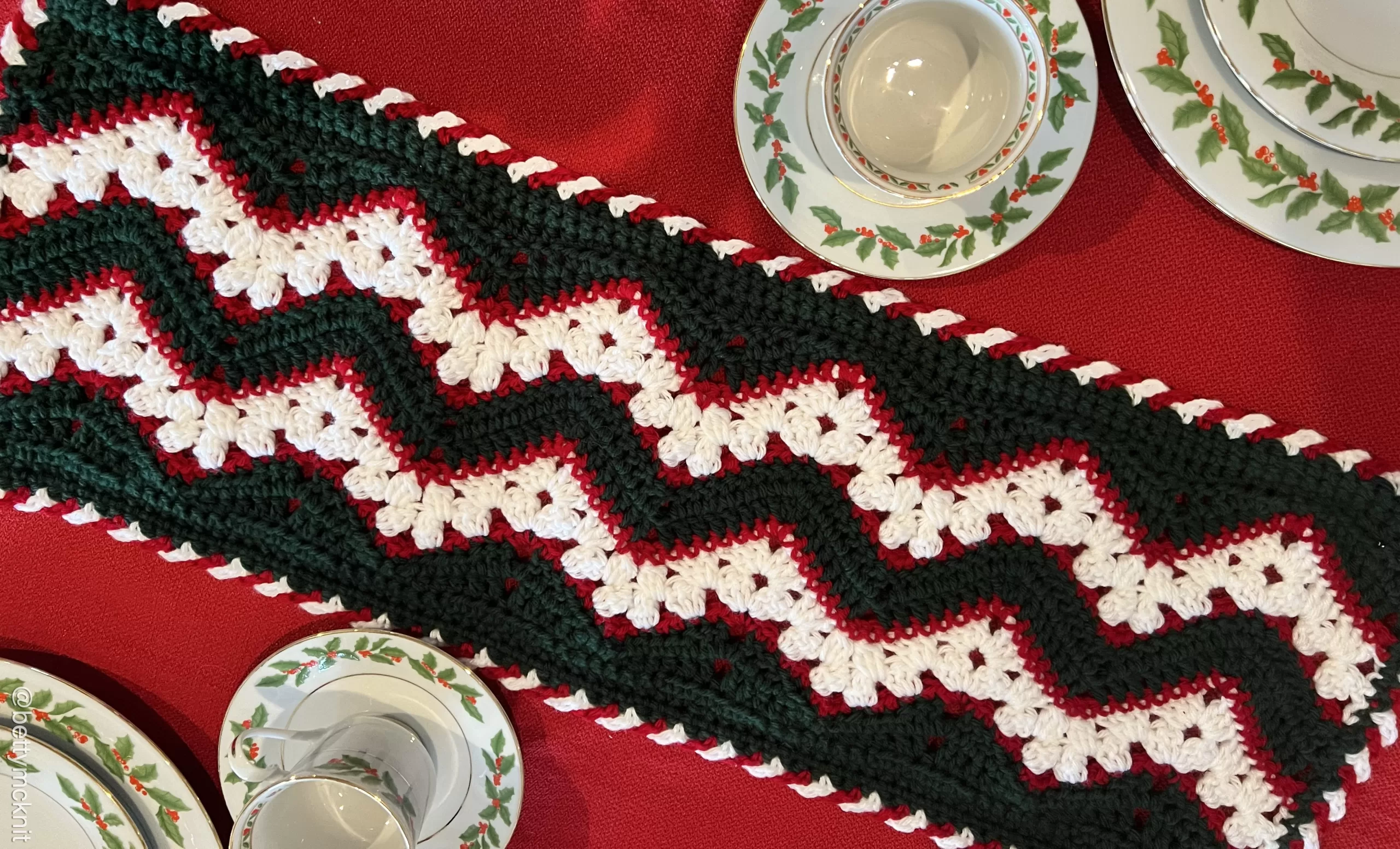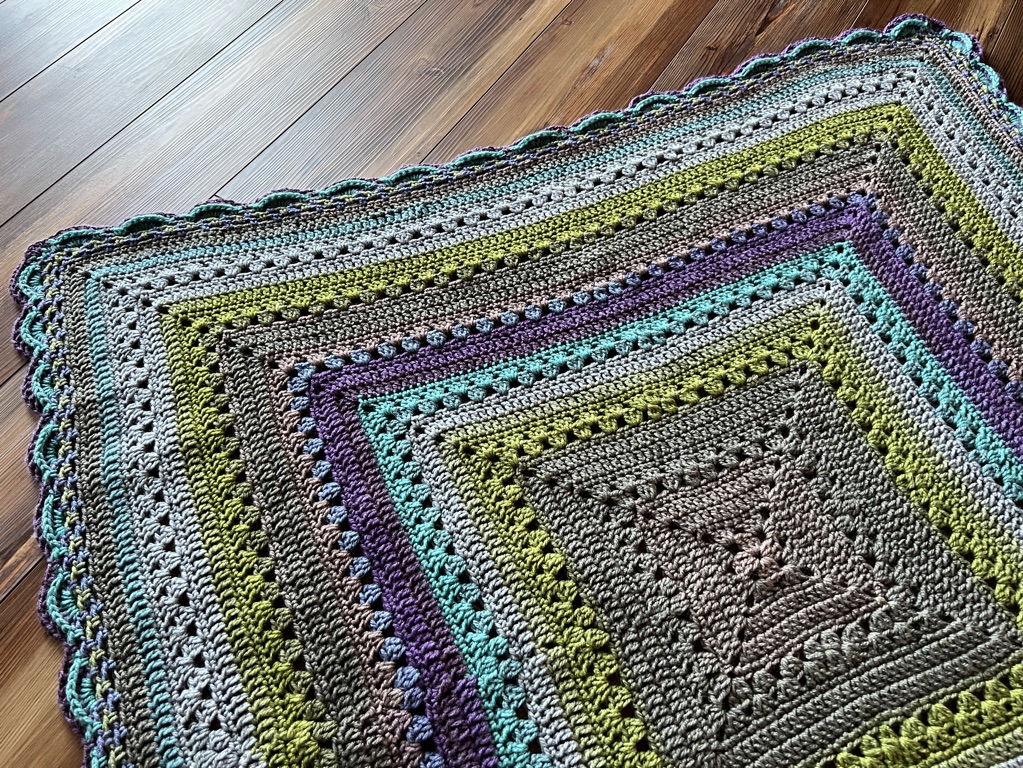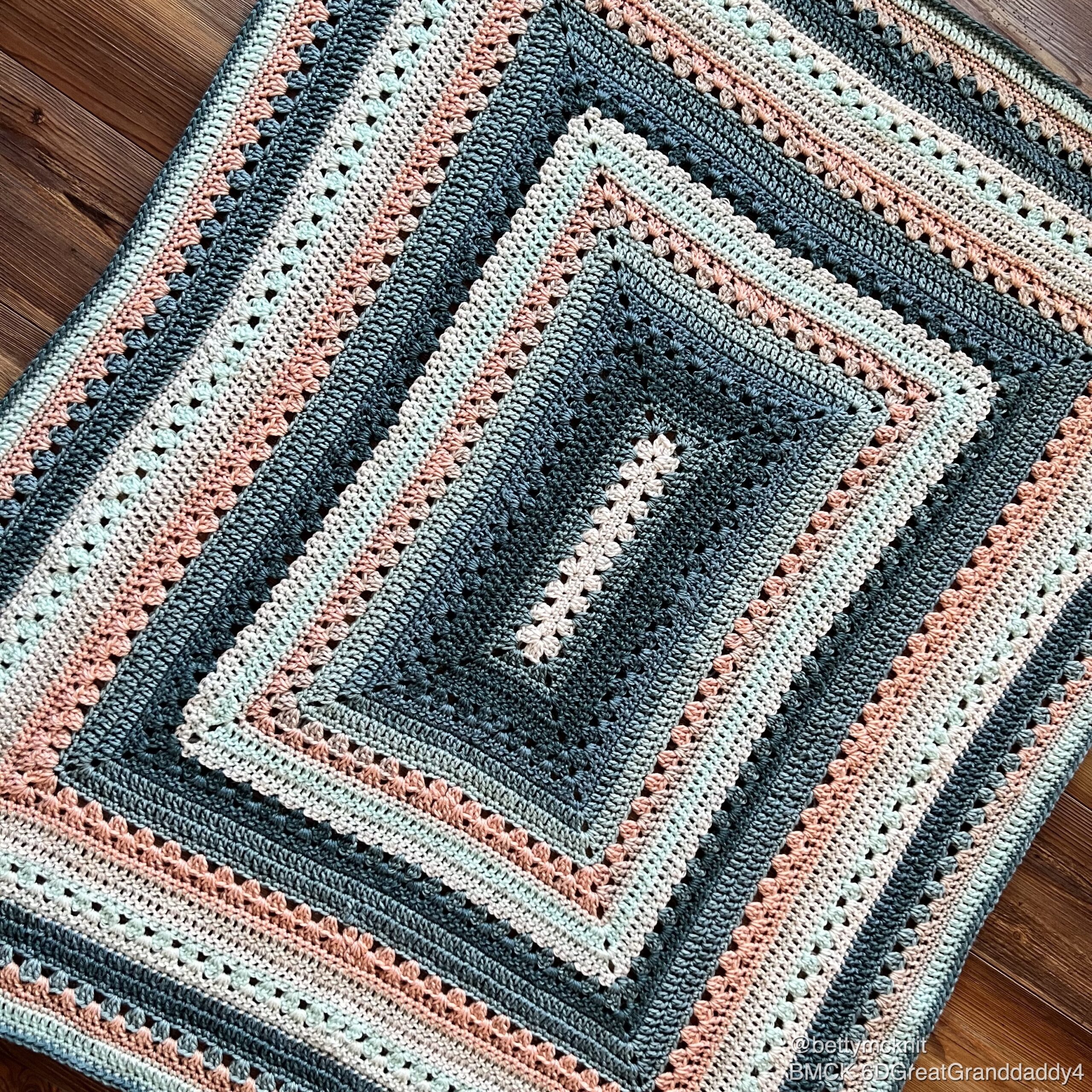A Guide to Cake Mixing
Stay in touch! Sign up for Betty’s Newsletter.
How to combine self-striping cake yarns in your 6-Day Kid Blanket projects.
There are so many wonderful self-striping cake yarns on the market today, and they take the guess work out of color work. Long color-change yarns are perfect for the 6-Day Kid Blanket and Star Blankets. You can create a gorgeous blanket in any size using these colorful yarns that make the stripes for you. No need for guesswork or choosing a striping method, these yarns do all the work.
I’ve taken to mixing cakes of different colorways for fun and out of curiosity to see how the yarns will work up. I enjoy watching the colors line up adjacent to one another in ways I didn’t plan and couldn’t have guessed. I’ve also noticed that mid-row color changes aren’t as noticeable when I mix cakes.
When you cake-mix, let go of the need to know “exactly” how it’s going to turn out. There is an element of chance when you mix cakes. Even if you use the same exact brand and colors you saw another crocheter use, your blanket will not come out exactly the same because there is no way to control how the different stripes and colors line up. No two cake-mixed blankets are ever the same.

Here are some ways to mix cakes in your 6-Day Blanket project:
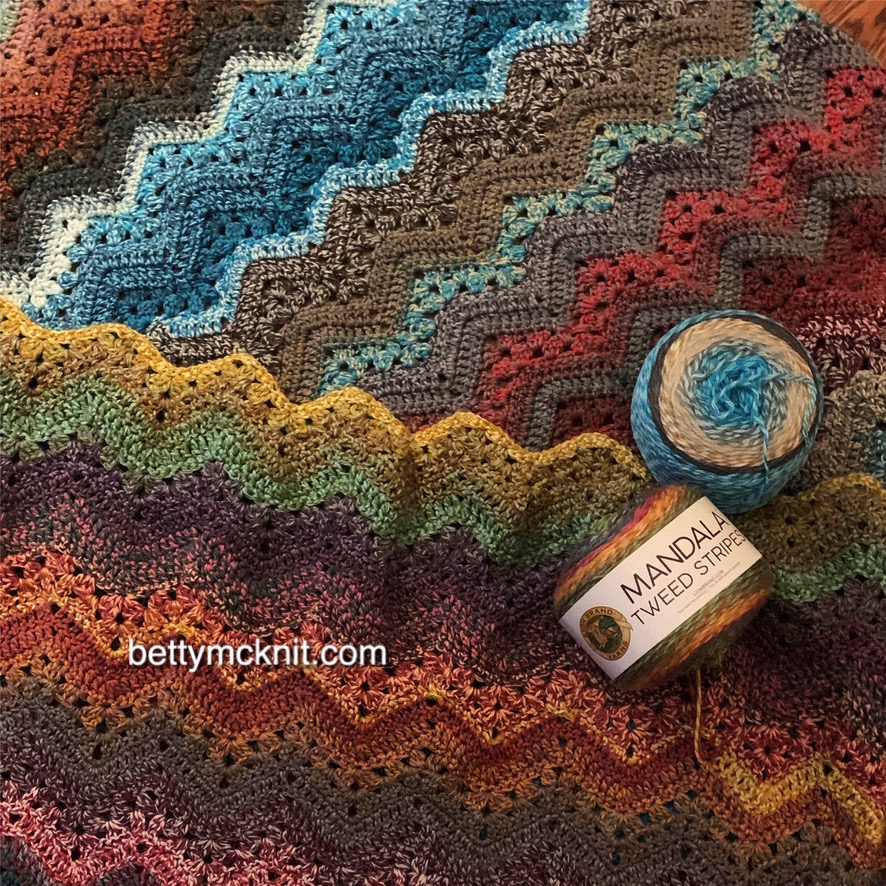
Cake Chain: Finish an entire cake and then add the next cake. You can alternate two color ways or mix up a bunch of colors.
Example: 6-Day Boom Blanket – Erin combined nine cakes of Mandala Tweed Stripes.
Example: Heather Hullinger’s Heathered Rainbow
Cake Switch: Alternate cakes on specific rows. My favorite way to do this is to use a main color on rows 2-4, change to contrast color on rows 5-6, and then go back to the main color on row 7. Only the double crochet rows are worked in the contrasting color. You can choose other rows, for instance using a contrasting color on only the sc rows, 4 and 7, or using a contrasting color on just one granny row. The possibilities are really infinite.
Example: Betty’s Lazy Mixer, Mushroom Risotto Baby Blanket – contrasting cake yarns used on rows 5 and 6.
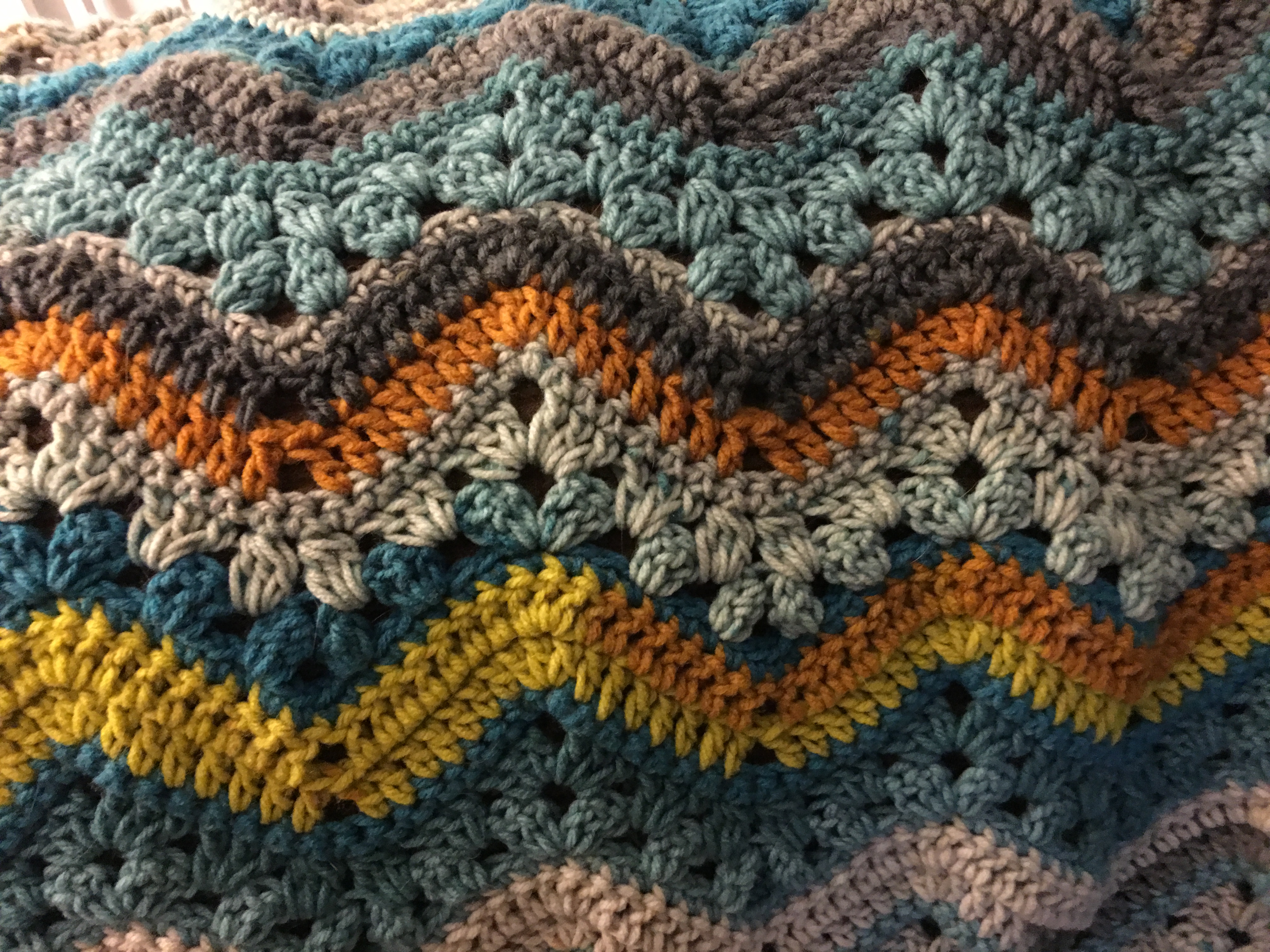
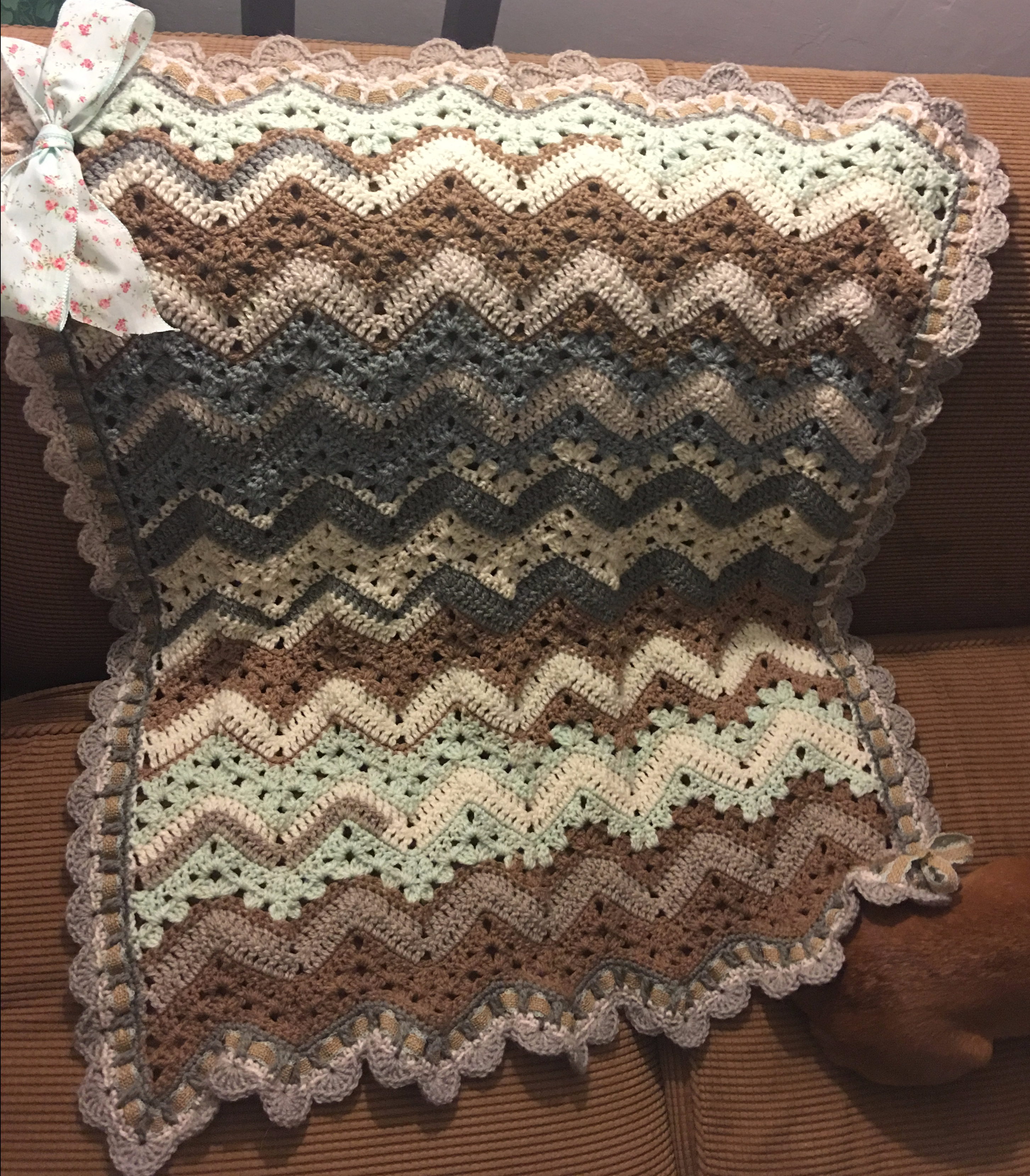
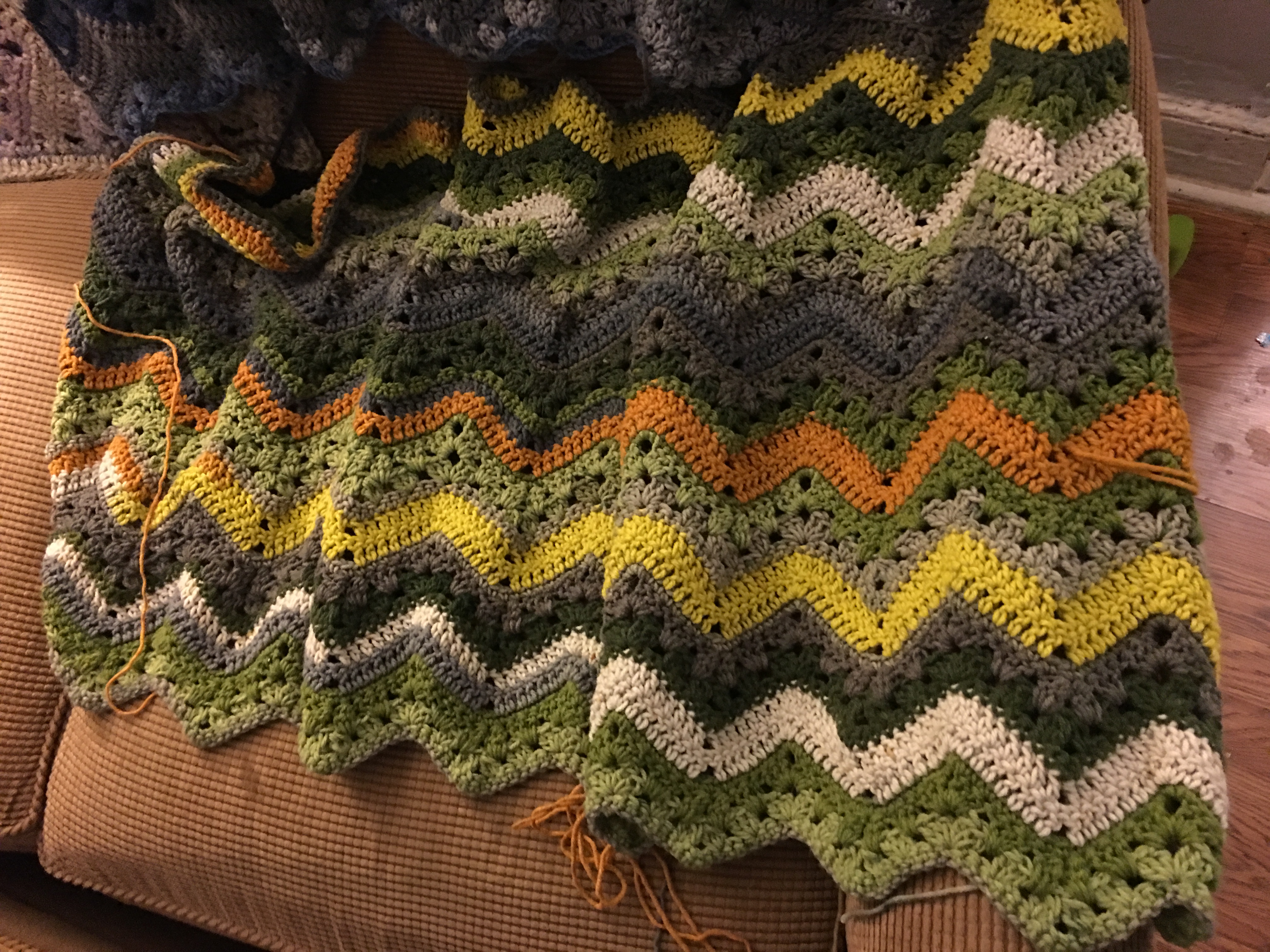
Example: Fossils and Lava: Contrast color added on sc rows, additional sc row added so that Lazy Betty could carry the yarn up the sides and not have to weave in additional ends.
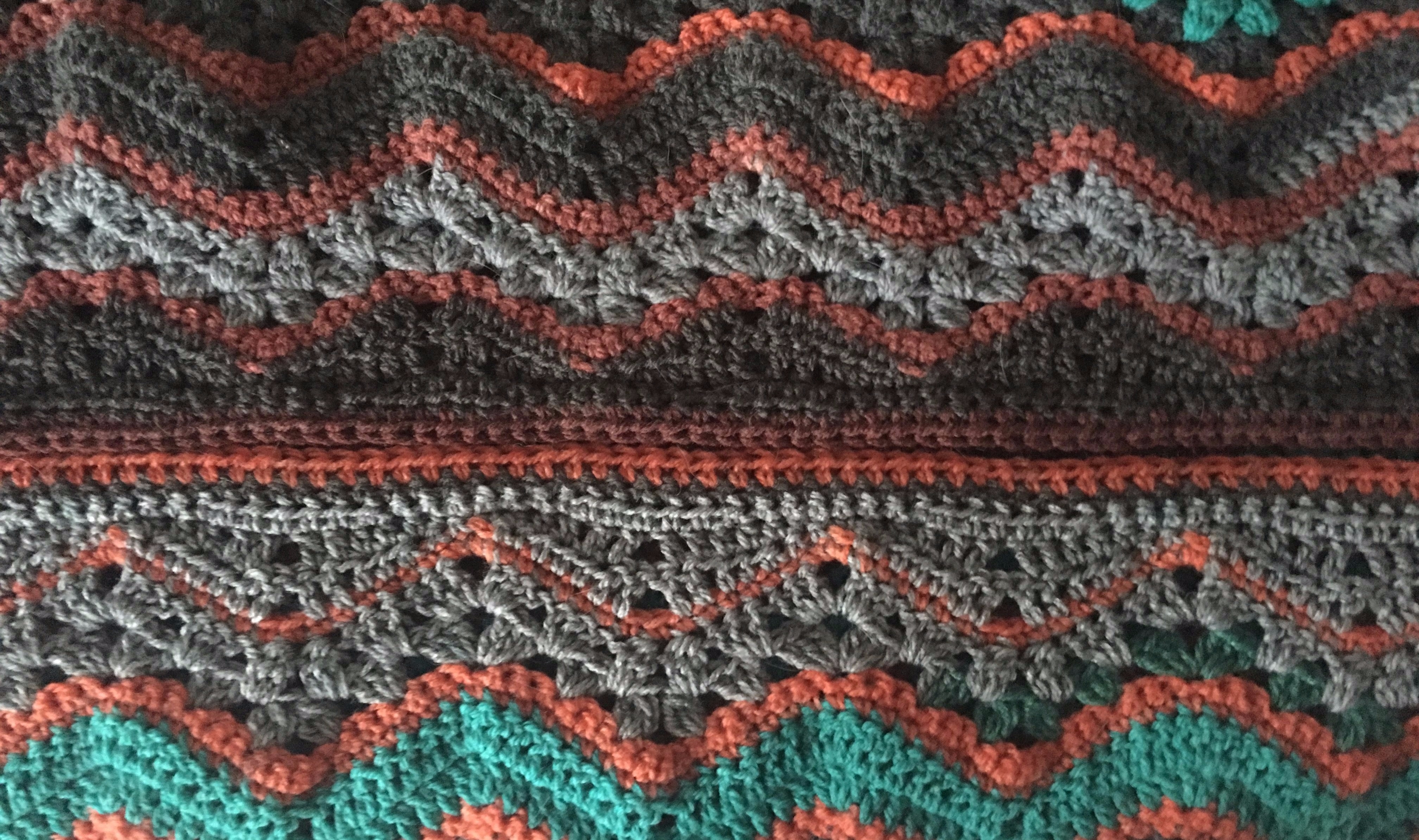

Randomize: for this method you will choose 3-4 different cake yarns. Number the cakes in order. Complete one repeat of the pattern with cake 1, then change to cake 2 for the next repeat. This method is more art than science. You will have to read your cakes and decide if you like the way the colors are lining up. If for instance too much of one color starts pooling, you can switch the order of the cakes, use one of them from the opposite end, or changing cakes before the end of the pattern repeat. It’s your blanket, and you should be happy with how it looks. Cake mixing is an experiment, so don’t be afraid to make up the rules as you go along.
Alternate starting ends: This is a really simple way of mixing when using cakes of the same colorway; alternate which end you start from so that the striping pattern inverts. This effect is especially dramatic on the 6DKB Supernova.
Example of randomized: Spring Mixers, Zen Mix and Megan’s Mix. With each of these blankets, I decided at the beginning which cake I would use for the edge. I controlled the first eight rounds so that there were no mid-row color changes. After that, I just let the colors flow. I worked through the yarns for about one repeat of the pattern, or less if I got bored, or if I noticed that there were a lot of similar colors lining up too much at once. I kept the order of the cakes, unless I didn’t feel like using the next color that was up. Each cake was added to the blanket twice. These were “I’m doing whatever I feel like” mixes. They were so fun and pleasant to work on, and the combinations surprised me. “Megan’s Mix” is one of the most beautiful blankets I’ve ever made, and I didn’t plan how the colors would line up.
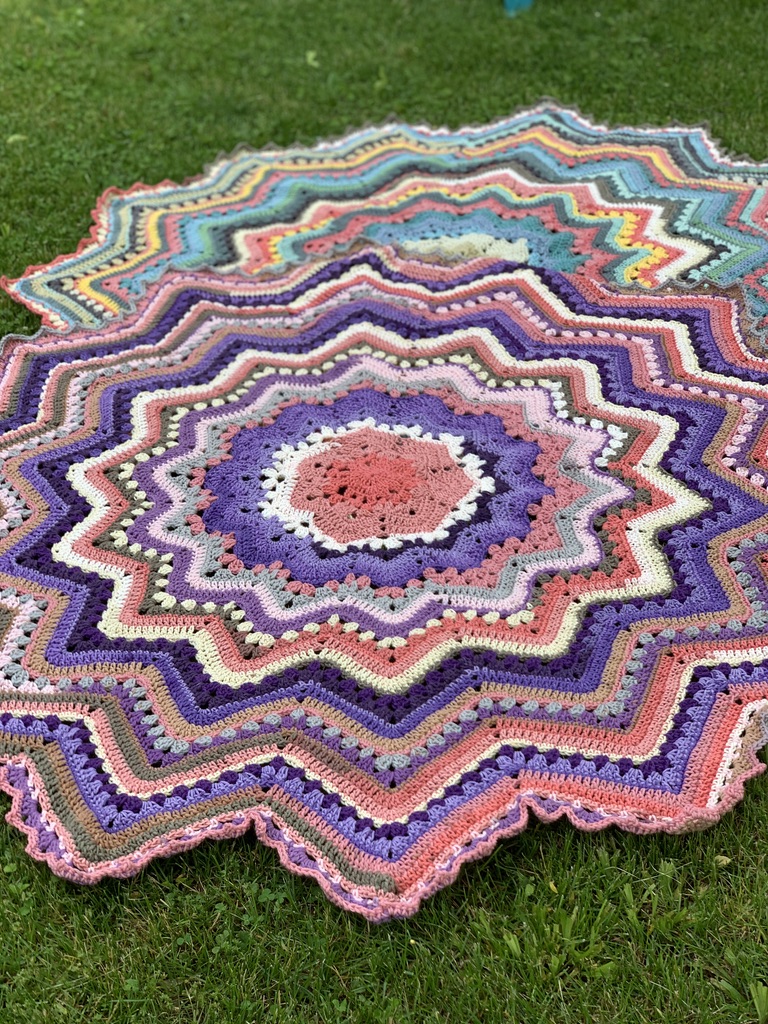
How to choose which cakes to mix?
There are as many answers to this as there are crocheters and lovers of yarn. Here are some ideas:
- Choose cakes with one common color, even if it is different shades.
- Choose one highly contrasted colorway and one more neutral colorway.
- Combine all cool tones (blues and greens) or all warm tones (red, pinks, oranges).
- Choose cakes that don’t seem like they would ever go together in a million years (exactly what I did with Betty’s Lazy Mixers).
- Use whatever you have left, or whatever they had at the store, or whatever you have too much of, or whatever you want to get rid of.
- Choose colors that remind you of something, blues for sky and sea, tan for sandy shores, bright yellow for sunshine and daffodils, dark purple for passion, green for dollar bills or woodland fairies… you get the idea. Combine two of your favorites. Then give the blanket a name that tells the story of the colors.
- Let a toddler choose for you.
- Close your eyes and grab a few random cakes out of the stash.
When mixing cakes and new colors give them a chance to show up before you decide it’s not working. One or two rows are not enough to know if the mix works. I’ve had the experience of not liking the first few rows or repeats of my color choices, and usually all I really needed was to stick it out for a few more rounds. You may get halfway into your blanket and think, what am I doing?? If you aren’t sure, set your project aside for a few days and take it out and look at it again with fresh eyes after some time (this is one reason to always have more than one project going). Take some chances, you may surprise yourself.
Cake mixing is about letting go, letting it flow, and discovering new possibilities. But always remember, life is too short to knit or crochet with yarn you don’t love! If it’s not working for you, it’s okay to rip it out and try something else.
Mix on, Blanketeers!

